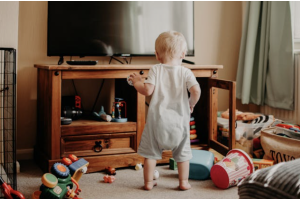What Helps With Athlete's Foot? 10 Science-Backed Tips

Athlete's foot, or tinea pedis, is an irritating and often persistent problem that can affect anyone. This common fungal infection usually begins between the toes and can spread to the rest of the foot, causing itching, burning, peeling skin, and redness. If left untreated, it can make simple daily activities uncomfortable and slow recovery.
The good news is that there are proven ways to treat and stop it from returning. A mix of good daily habits and effective treatments can help clear the infection faster and protect your feet in the future. You don't need to rely on quick fixes that only hide the symptoms.
In this article, we'll share practical, science-backed tips to help you manage athlete's foot effectively. Read on!
1. Seek Professional Athlete's Foot Treatment
Over-the-counter products and home remedies are enough for many people to treat athlete's foot. But if symptoms are severe, keep coming back, or spread to other parts of the body, professional treatment may be what helps most. A doctor or podiatrist can confirm the diagnosis, rule out other skin conditions, and recommend stronger treatments.
For stubborn cases, you can use prescription antifungal creams, oral medications, or medicated soaks. In rare situations, a secondary bacterial infection may develop, requiring antibiotics.
Professional guidance can help ensure that the athlete's foot treatment you receive targets the problem effectively and reduces the risk of complications. Seeking help early can also save time and prevent the infection from worsening.
2. Keep Your Feet Clean and Dry
Good hygiene is one of the most crucial steps when deciding what could help with athlete's foot. Fungus thrives in moisture, so it's essential to wash your feet with soap and warm water daily.
Be sure to dry your feet thoroughly, especially between the toes. Even a small amount of moisture can give the fungus a place to grow. You should also use a clean towel each time to prevent spreading the infection.
If you live in a humid climate or sweat a lot, it's a good idea to wash and dry your feet more than once a day. Keeping them dry makes it harder for the fungus to survive and can help speed up healing.
3. Use Antifungal Creams or Sprays
When people ask what could help with athlete's foot quickly, antifungal medication is often the answer. These can be found in the form of creams, sprays, powders, or gels, and most are available without a prescription. Active ingredients like terbinafine, clotrimazole, or miconazole are common as they target the foot fungus directly.
Follow the instructions on the package carefully and continue using the treatment for the full recommended time, even if symptoms improve earlier. Stopping too soon can allow the fungus to return. In severe or stubborn cases, your doctor may prescribe stronger medication.
4. Avoid Sharing Personal Items
Sharing items such as socks, shoes, or towels might seem harmless, but it can undo your efforts in treating athlete's foot. Because fungal skin infections spread easily through direct contact with contaminated fabrics, passing these items between people can transfer the fungus to others or back to you after recovery.
Establishing a no-sharing rule for everyone in your household can help reduce the risk of transmission. Though it's a small change, it may support your efforts to prevent reinfection and allow your treatment to work more effectively.
5. Choose Breathable Footwear
The type of shoes you wear could influence what helps with athlete's foot. Materials like leather or mesh allow better airflow, which helps keep feet cooler and drier throughout the day.
In contrast, tight shoes made from synthetic materials often trap heat and moisture, creating the perfect environment for fungal growth. Rotating your footwear gives each pair time to dry thoroughly before the next use, lowering the risk of foot fungus lingering inside.
Another helpful step is removing insoles after wearing your shoes and letting them air out. These small but consistent habits make a big difference in keeping your feet healthier and less prone to infection.
6. Wear Protective Footwear in Public Places
Public places like showers, locker rooms, and swimming pools are frequent hotspots for athlete's foot. Warm, damp surfaces in these areas can harbor the fungus, making it easy to contract through direct contact. Flip-flops, water shoes, or shower sandals offer a simple barrier between your skin and contaminated surfaces, lowering the risk of infection.
For those already dealing with athlete's foot, this habit could also protect others from catching it. It's a small effort that provides considerable benefits, making it essential to keep feet safe in shared, moisture-prone environments.
7. Change Socks Daily
Wearing fresh socks daily is a simple step that could help prevent the spread of athlete's foot. Throughout the day, socks absorb sweat, and that trapped moisture creates the ideal conditions for fungus to thrive. Switching to clean, dry socks regularly reduces this risk and supports faster healing.
Those who exercise often or have naturally sweaty feet benefit from changing socks more than once daily. Cotton socks and moisture-wicking materials work well because they draw moisture away from the skin, keeping feet dry and comfortable. Long periods in the same damp pair, especially after workouts, can undo your efforts to control this skin infection, so swapping them out promptly is a smart habit.
8. Disinfect Shoes and Towels
A critical part of what can help with athlete's foot is eliminating the fungus from the surfaces it clings to. Items like shoes, socks, and towels can still carry fungal spores long after symptoms fade, making reinfection a real possibility. Washing socks and towels in hot water and drying them on high heat can destroy these lingering spores.
Shoes also need attention to stop the cycle of infection. Antifungal powders or sprays can target the fungus directly, while placing shoes in sunlight can help remove moisture and freshen them. This can create a safer environment for your feet and support the progress you've made in treatment.
9. Try Foot Powders for Moisture Control
Foot powders can be part of what helps with athlete's foot by keeping feet dry during the day. These powders absorb excess moisture and reduce friction, which makes it harder for the fungus to grow. Some powders also contain antifungal ingredients for added protection.
To get the best results, apply powder to clean, dry feet before wearing socks. This approach can be constructive for those who experience frequent sweating or spend extended periods in closed shoes, as it helps maintain a drier and more comfortable environment.
10. Strengthen Your Immune System
While athlete's foot mainly develops from contact with fungus, a strong immune system can help your body fight athlete's foot more effectively. Consuming a balanced nutrition, getting quality sleep, and staying active all support your health.
Though lifestyle changes are not a direct cure, they can help you resist repeat infections. People with weakened immune systems, such as those with diabetes, may need to be extra careful and follow good foot care routines. This is because bodies may take longer to heal and have a harder time fighting off fungal growth, which can make infections more severe or persistent if not managed properly.
Conclusion
Athlete's foot is unpleasant, but it's manageable with the right approach. The key to helping is combining daily foot hygiene with effective antifungal medicines and preventive habits.
Remember that treatment takes time and effort. The goal isn't just to get rid of the symptoms but also to prevent the infection from coming back. With patience and consistency, you can maintain healthy, comfortable, and fungus-free feet.






